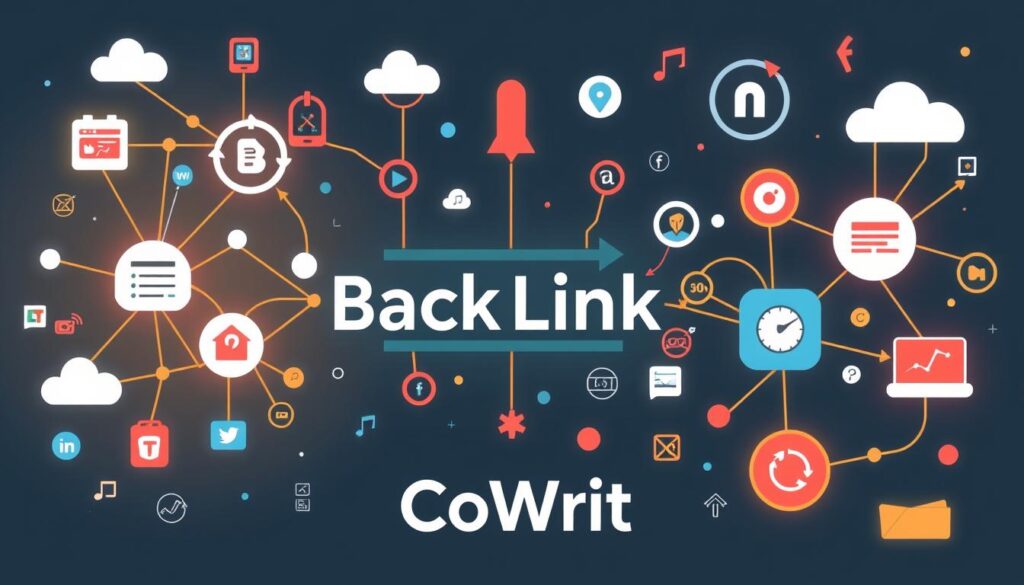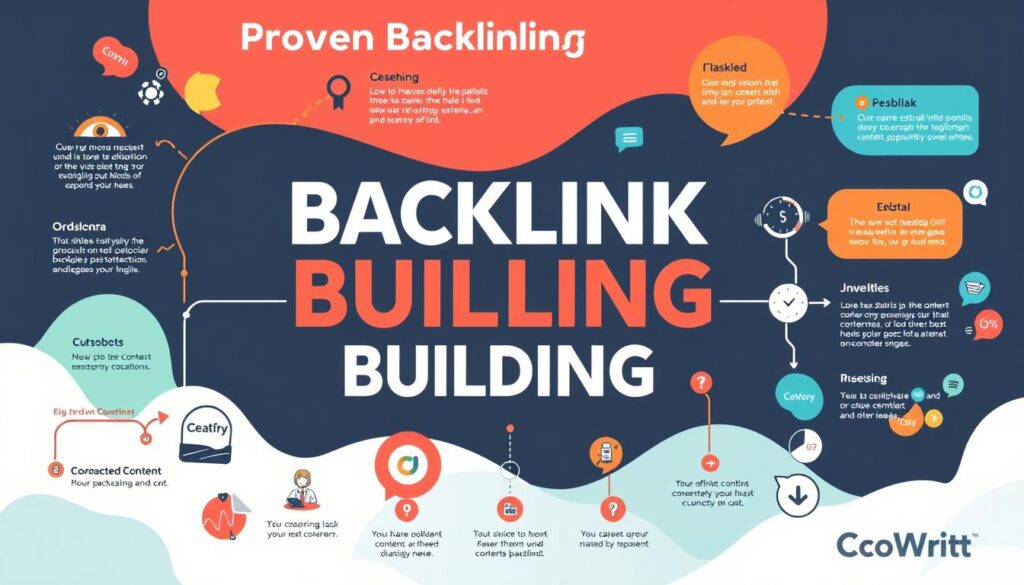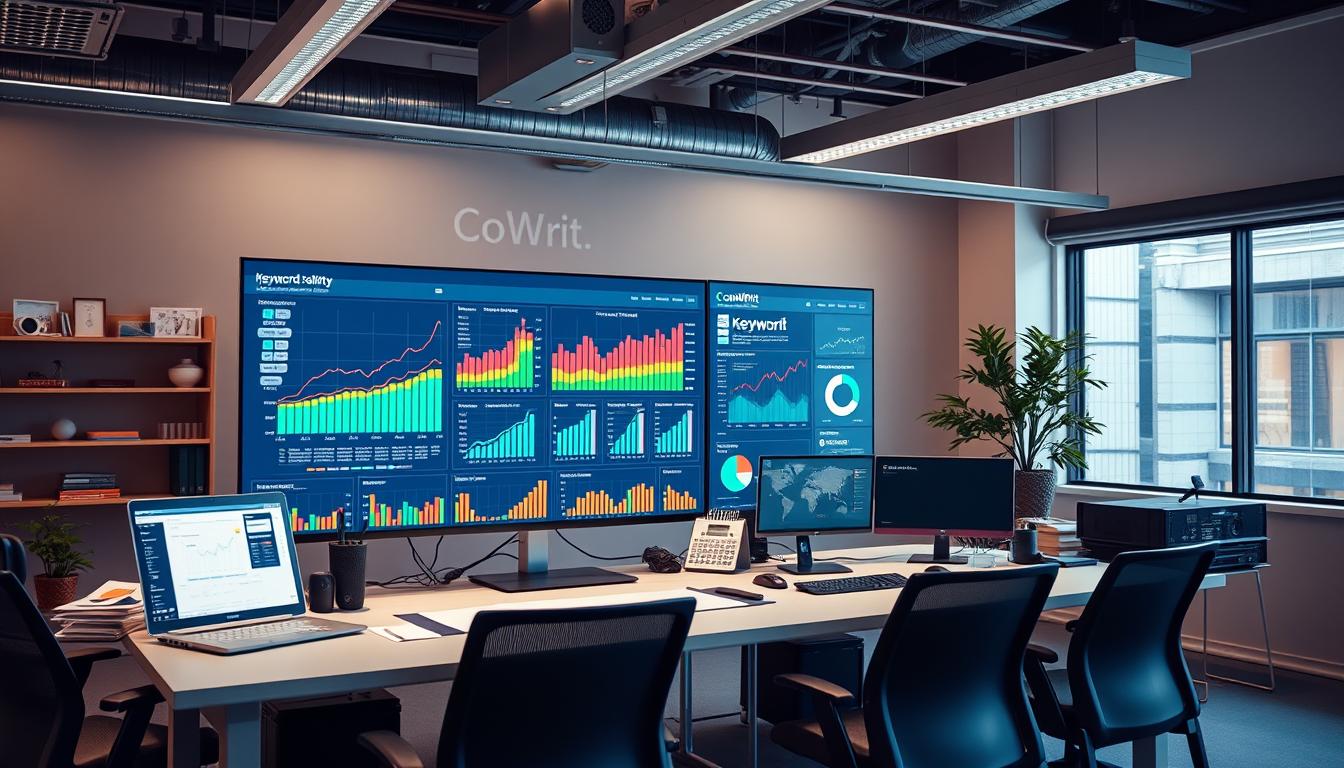In the fast-paced world of SEO, backlink building is key to boosting your site’s authority and rankings. By using proven methods, you can get millions of quality backlinks. This helps you reach the top in your field.
By becoming a go-to source for reporters and bloggers, or by publishing standout content, you can get a lot of backlinks. For example, the “Skyscraper” content method has earned 10.2K backlinks. The “Moving Man Method” also works well, getting links from .edu sites and other authoritative places.
Even though most online content gets no backlinks, creating exceptional content can change that. Focus on formats like “Why” posts, “What” posts, infographics, and videos. These types tend to get more backlinks, giving you an edge.
Key Takeaways:
- Proven techniques can help you accumulate millions of high-quality backlinks
- Strategies like the “Skyscraper” technique and “Moving Man Method” have been successful in generating backlinks
- Focus on creating comprehensive, shareable content formats like “Why” posts, infographics, and videos to attract more backlinks
- Understand the importance of domain authority and internal linking for improving search rankings
- Continuously monitor and maintain your backlink profile for long-term success
Understanding the Importance of Backlinks
In the world of off-page SEO, backlinks are key to building your website’s authority and driving traffic. But what are backlinks, and why are they so important for SEO? Let’s explore why backlinks matter and how they affect your website’s performance.
What are Backlinks?
Backlinks, or inbound links, are links from other sites to yours. They show search engines your content is valuable and trustworthy. The more quality backlinks you have, the more authoritative your site looks to search algorithms.
Why Backlinks Matter
- Backlinks are a major ranking factor for Google, making them crucial for off-page SEO.
- Quality backlinks from trusted sites can boost your domain authority, improving your search rankings.
- Backlinks help search engines find and index your content faster, enhancing your online presence.
The Impact of Backlinks on SEO
The role of backlinks in SEO is clear. Studies show pages with more quality backlinks rank higher in search results. Search engines like Google use algorithms, like PageRank, to judge a site’s importance based on backlinks. By getting quality backlinks, you can increase your site’s credibility and visibility, attracting more organic traffic.

“A single quality backlink can be more powerful than 1,000 low-quality backlinks.” – Brian Dean, SEO expert
Effective off-page SEO strategies, like link building and authority building, are vital. They help maximize the impact of your backlinks and improve your site’s performance in search results.
Types of Backlink Building Techniques
Improving your website’s link popularity and search engine rankings involves three main techniques: natural, manual, and self-created backlinks. Each method has its own benefits and is essential for a solid link building strategy.
Natural Backlinks
Natural backlinks happen when other sites link to your content without you asking. Search engines love these links because they show your content is valuable. [https://www.sendible.com/insights/seo-link-building-techniques-that-work] You can earn natural backlinks by creating content that others find useful and worth sharing.
Manual Backlinks
Manual backlink building means reaching out to others to ask for a link. This method requires building relationships and offering value in exchange. It’s more time-consuming but can be very effective in boosting your external links and quality backlinks.
Self-Created Backlinks
Self-created backlinks come from your own efforts, like directory submissions or social media profiles. While they help with link popularity, they’re not as valuable as natural or manual backlinks for SEO.
Knowing about these backlink types helps you create a balanced strategy. This can improve your website’s visibility and search engine rankings.
| Backlink Type | Description | Impact on SEO |
|---|---|---|
| Natural Backlinks | Backlinks earned organically without direct outreach | Highly valuable for improving search engine rankings |
| Manual Backlinks | Backlinks acquired through active outreach and relationship building | Effective in increasing external links and quality backlinks |
| Self-Created Backlinks | Backlinks generated through your own efforts, such as directory submissions or forum signatures | Contribute to overall link popularity, but less valuable for long-term SEO |

“High-quality backlinks are crucial for achieving better search engine rankings, signaling to search engines that your content is valuable and trustworthy.”
Strategies for Acquiring Quality Backlinks
Getting quality backlinks is key to off-page SEO and building authority. Search engines see backlinks as a vote of confidence in your content. Getting links from trusted sources can boost your site’s rankings and visibility online. Here are three ways to build a strong backlink profile:
Guest Blogging for Links
Guest blogging means writing for other sites in exchange for a link back to yours. By writing valuable articles for blogs in your field, you get backlinks and boost your brand. It also shows you’re an expert in your niche.
Influencer Outreach
Working with industry influencers is a strong link building tactic. Contact respected leaders in your field for content collaborations or guest posts. Their influence can lead to valuable backlinks for your site.
Broken Link Building
Broken link building finds broken links on other sites and offers your content as a replacement. This method gets you backlinks and helps the site owner by improving their site. It’s a win-win for everyone involved.
Using these strategies can make your backlink profile more diverse. It increases your site’s authority and helps your search rankings grow over time.

Creating Shareable Content
Making content that people want to share is a great way to get link acquisition. Creating infographics is a powerful method. They make complex info look good and are easy to share.
Infographics can lead to many backlinks when shared online. This helps your site get noticed more.
Also, writing blog posts with deep insights is smart for content marketing. These posts are often linked to by other sites. This boosts your site’s authority and search rankings.
Using videos is another good idea. They keep people interested and can get shared a lot. This can lead to more backlinks and better visibility for your brand.
When making shareable content, aim to solve problems or answer questions. Content that resonates with your audience is more likely to get shared. This helps drive link acquisition and improves your content marketing efforts.

“Creating shareable content is the key to unlocking natural backlinks that can significantly boost your website’s authority and search engine rankings.” – SEO Specialist
Leveraging Social Media for Backlinking
Social media platforms are now key for boosting your brand’s visibility and getting valuable backlinks. By using these platforms wisely, you can greatly improve your SEO and website rankings.
Sharing Your Content
Sharing your top-notch, engaging content on social media can make it more visible. This increases the chance of others linking back to it. Whether it’s a blog post, infographic, or video, posting regularly on different social channels can attract social media marketing and brand visibility.
Engaging with Followers
Creating real connections with your social media followers can lead to link building chances. By engaging with your audience, answering comments, and building a community, you can gain a loyal following. This loyal group might be more likely to share your content and link to your website.
Collaborating with Other Brands
Working with other brands or influencers on social media can introduce your content to new people. This can lead to backlinking chances. Through joint projects, co-created content, or promotions, you can leverage your collaborators’ networks and credibility. This can boost your visibility and get you high-quality backlinks.
Even though social media links are “nofollow,” they still offer indirect SEO benefits. They can drive traffic, increase brand awareness, and build audience relationships. Social media is essential for your backlinking efforts and the success of your online presence.
Building Partnerships and Networks
Creating a good link building strategy is more than just getting backlinks. It’s about making strong connections in your industry and building a wide network. Joining online groups, swapping links with others, and talking to key figures in your field can open up many opportunities for your business.
Joining Online Communities
Look for online forums, discussion boards, and social media groups that fit your industry. Being active in these places can show your expertise, connect you with others, and get you backlinks naturally.
Establishing Mutual Links
Try reaching out to businesses that are similar to yours. You might be able to swap links, which can help both of your websites. But, make sure it’s done naturally and honestly to avoid any harm to your site’s reputation.
Networking with Industry Influencers
Find important people in your field and connect with them. Go to industry events, join webinars, or just follow them on social media. Building real relationships with these people can lead to great backlinks, guest posts, and more visibility for your brand.
Remember, the goal of networking is to build lasting relationships, not just get links. By doing this, you’ll not only get better at link building but also become more respected in your field.
| Technique | Benefits | Considerations |
|---|---|---|
| Joining Online Communities |
|
|
| Establishing Mutual Links |
|
|
| Networking with Industry Influencers |
|
|
By using these methods, you can improve your link building, create valuable industry relationships, and build a strong networking base. This will help your SEO success in the long run.
Monitoring and Analyzing Backlinks
In the world of search engine optimization (SEO), keeping an eye on your website’s backlinks is key. Using SEO tools helps you track and understand your backlinks. This way, you can make smart choices to improve your online presence.
Tools for Comprehensive Backlink Analysis
Many tools are available for backlink analysis, each with its own strengths. Some top choices include:
- Ahrefs: It gives detailed backlink data, like referring domains and anchor text. Ahrefs offers a full view of your link profile.
- Semrush: It’s great for backlink audits, spotting bad links that could hurt your SEO.
- Moz Pro’s Link Explorer: It helps analyze link equity and compare your backlinks to others.
Assessing the Impact of Backlinks on Rankings
Watching your website’s rankings and traffic helps you see if your SEO is working. This lets you tweak your link-building plans to get better results.
Adjusting Strategies Based on Backlink Data
Backlink data is a treasure trove for improving your SEO. It shows you which links work best and where to find more like them. It also helps you avoid bad links, keeping your site’s reputation strong.
“Effective backlink monitoring and analysis are the cornerstones of a successful SEO strategy. By leveraging the right tools and data, you can unlock the true power of your website’s link profile and drive sustainable growth in search engine rankings.”
The Role of Internal Linking
Internal linking is key to a strong on-page SEO plan. It connects your site’s pages with strategic links. This spreads link juice and boosts your website structure. It also helps with backlink building and better search rankings.
What is Internal Linking?
Internal linking means making hyperlinks between your website’s pages. These links help search engines see your site’s structure. It makes crawling and indexing easier.
How Internal Links Support Backlinking
- Internal links move link juice from top pages to others.
- They boost the effect of valuable backlinks and improve website structure.
- They make your site easier to navigate, leading to better user experience and longer visits.
Best Practices for Internal Linking
- Use clear anchor text that matches the linked page’s content.
- Keep your website structure logical and easy to follow.
- Link to key pages like your homepage or top content to spread link juice.
- Avoid too much optimization, as it can look spammy to search engines.
- Check and update your internal links regularly to keep them useful and relevant.
By using these best practices, you can make internal linking work for your on-page SEO. It will also help your backlink building efforts.
Long-Term Backlink Maintenance
Keeping your backlink profile healthy is key for lasting SEO success. Check your website’s links often to make sure they’re active and useful. Also, keep an eye on new trends and algorithm changes to adjust your strategy.
Keeping Your Backlinks Healthy
Check your backlink profile regularly to spot and fix problems. Remove any bad or spammy links that could hurt your site’s authority. Work on building strong relationships with sites that have linked to you before.
Updating Old Content for New Links
Go back to your old content and make it better to get new links. Update any outdated info, make it more valuable, and make it easier to find. This will keep your content fresh and attract more quality links.
Staying Consistent with Your Strategy
Building a strong backlink profile takes time and effort. Stick to a solid link building plan, focusing on quality over quantity. Keep track of your progress, see how your efforts are doing, and tweak your strategy as needed to stay competitive.



